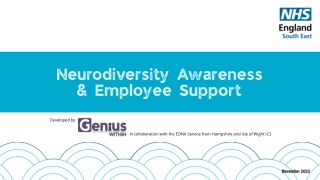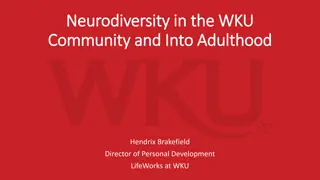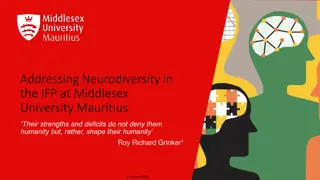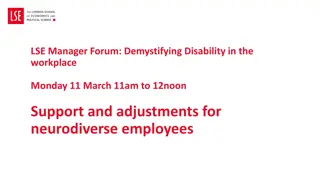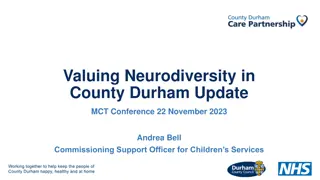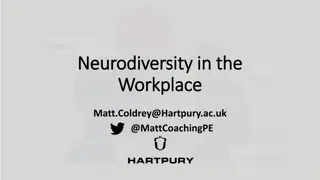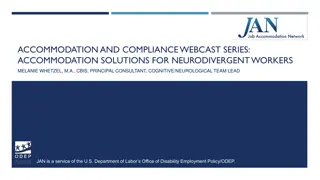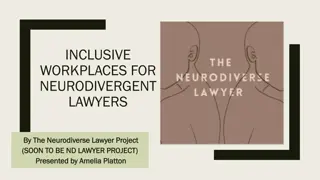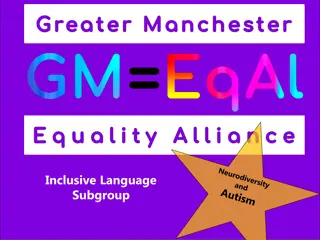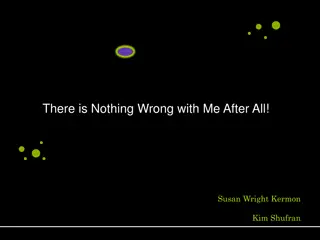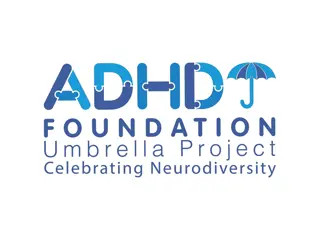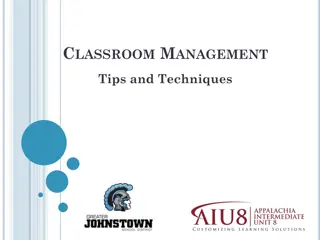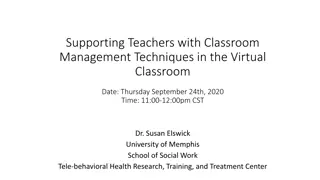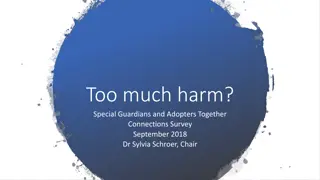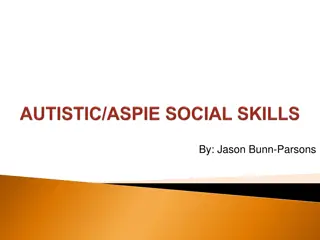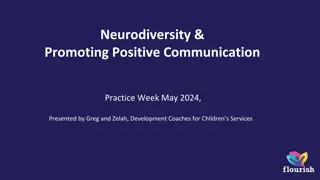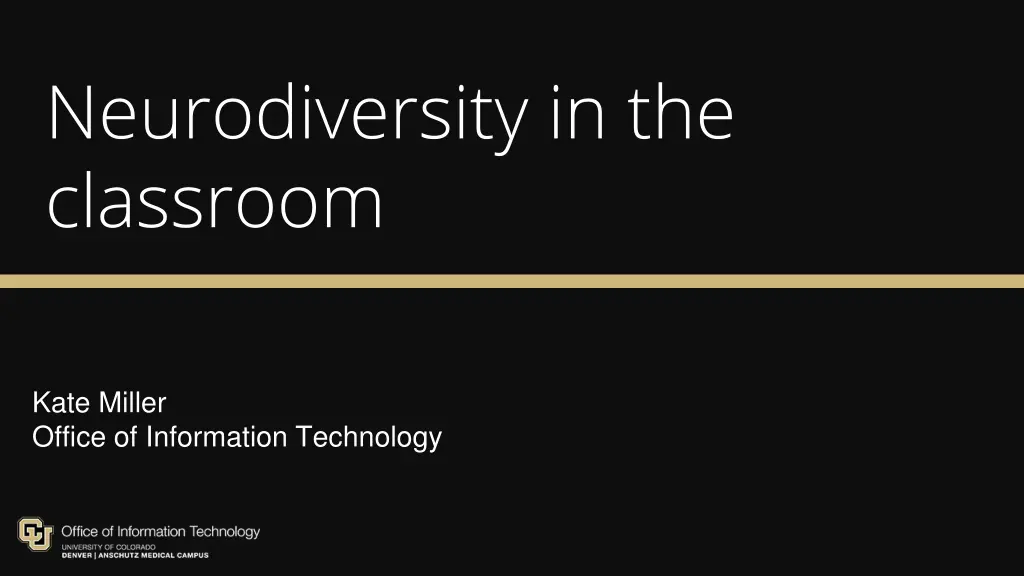
Understanding Neurodiversity in the Classroom
Explore the concept of neurodiversity, emphasizing the value of differences in human neurologies such as autism, ADHD, and dyslexia. Learn why neurodiversity is essential in supporting students with diverse learning needs in educational settings. Discover practical strategies and ideas to create an inclusive learning environment that celebrates cognitive diversity.
Uploaded on | 0 Views
Download Presentation

Please find below an Image/Link to download the presentation.
The content on the website is provided AS IS for your information and personal use only. It may not be sold, licensed, or shared on other websites without obtaining consent from the author. If you encounter any issues during the download, it is possible that the publisher has removed the file from their server.
You are allowed to download the files provided on this website for personal or commercial use, subject to the condition that they are used lawfully. All files are the property of their respective owners.
The content on the website is provided AS IS for your information and personal use only. It may not be sold, licensed, or shared on other websites without obtaining consent from the author.
E N D
Presentation Transcript
Neurodiversity in the classroom Kate Miller Office of Information Technology
Our time together today - Defining Neurodiversity - Exploring why Neurodiversity is important - What Neurodiversity can look like in the classroom - Ideas to consider to support learning - Classroom suggestions to support Neurodiversity - Questions
Neurodiversity (Short for neurological diversity ) The diversity of human brains and minds, and the idea that this is a natural, valuable form of diversity.
What is Neurodiversity, cont.? Neurodiversity is a philosophy that emphasizes differences in human neurologies Neurodiversity emphasizes that Autism, ADHD, dyslexia, mental health disorders for example, represent difference rather than deficits Neurodiversity invokes an emerging disability rights/ civil rights movement
Why Neurodiversity? More students in college with learning differences, including autism More CU Denver students needing support It s the right, good, and universal thing to do (human rights perspective) Our community is enriched by diversity (maximizing human capital perspective)
What can Neurodiversity look like in the classroom? Student may appear inattentive or bored May see repetitive behaviors Intense focus on topics of interest May display unexpected emotion when stressed Difficulty with organization Difficulty with group work Poor awareness of body space
Ideas to consider to support learning? Transparent and inclusive pedagogy What does success in this class typically entail? Executive Functioning challenges Provide specific, explicit instructions for organizing information and completing assignments Give clear, written plan of assignments Provide detailed schedule Have a clear, predictable class routine
Classroom suggestions? Universal design for learning - Clear expectations - Structured opportunities to interact - A constructive class culture - And consistent feedback
Classroom suggestions? Fine motor challenges Provide printed or online accessible notes Allow use of laptop or other voice-activated technology to take notes Sensitivity to Environment Provide quieter testing environment Allow use of headphones to block out sounds during exam Easing Transitions Begin class with discussion of diversity Allow for extra transition time Allow for sensory or comfort items (e.g., a fidget)
Where to go from here? - Reflect - Ask yourself is there anything I can change within my course today? - One change is a difference and it matters - Truly benefits everyone!

